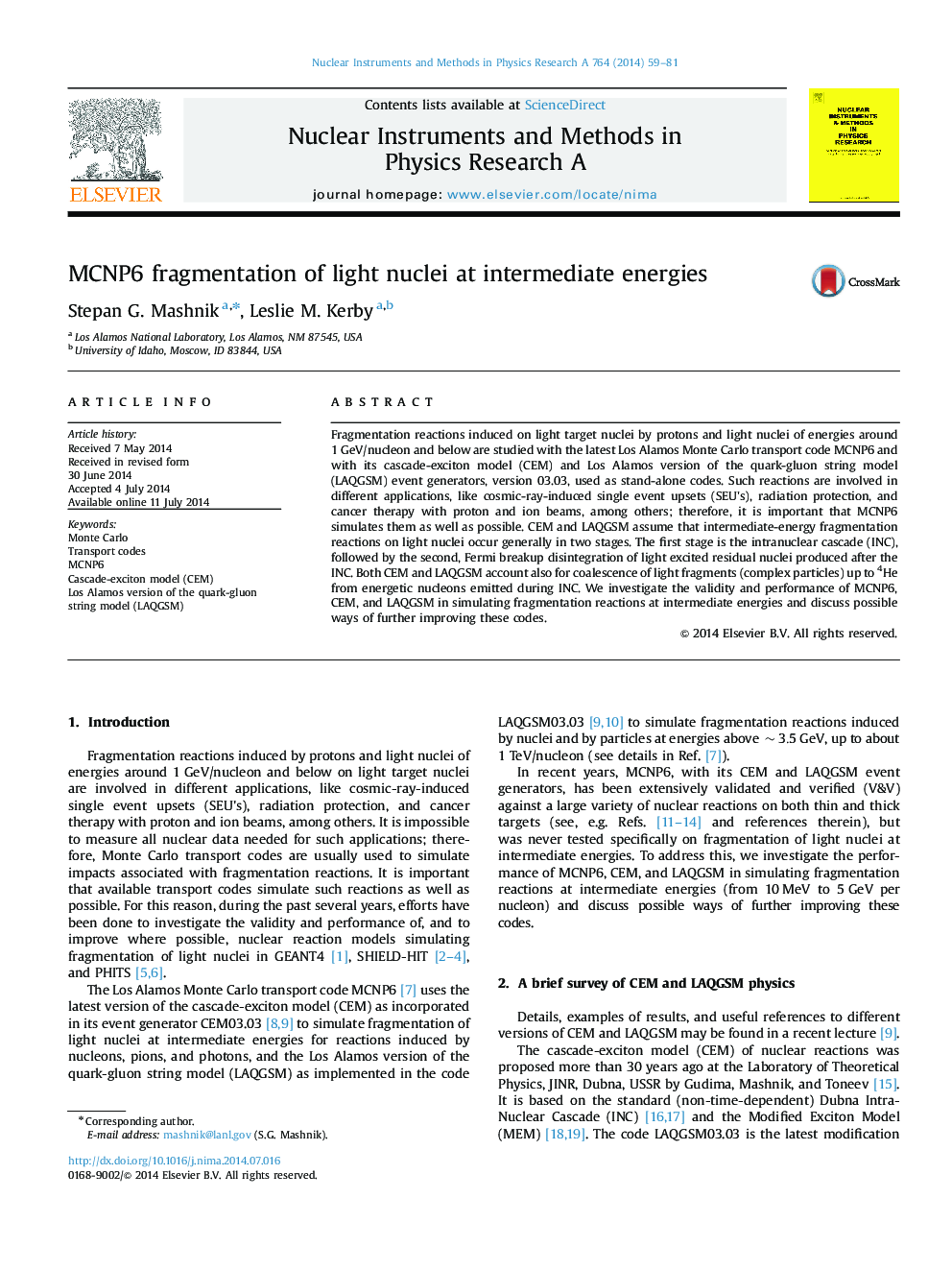| Article ID | Journal | Published Year | Pages | File Type |
|---|---|---|---|---|
| 8175916 | Nuclear Instruments and Methods in Physics Research Section A: Accelerators, Spectrometers, Detectors and Associated Equipment | 2014 | 23 Pages |
Abstract
Fragmentation reactions induced on light target nuclei by protons and light nuclei of energies around 1 GeV/nucleon and below are studied with the latest Los Alamos Monte Carlo transport code MCNP6 and with its cascade-exciton model (CEM) and Los Alamos version of the quark-gluon string model (LAQGSM) event generators, version 03.03, used as stand-alone codes. Such reactions are involved in different applications, like cosmic-ray-induced single event upsets (SEU׳s), radiation protection, and cancer therapy with proton and ion beams, among others; therefore, it is important that MCNP6 simulates them as well as possible. CEM and LAQGSM assume that intermediate-energy fragmentation reactions on light nuclei occur generally in two stages. The first stage is the intranuclear cascade (INC), followed by the second, Fermi breakup disintegration of light excited residual nuclei produced after the INC. Both CEM and LAQGSM account also for coalescence of light fragments (complex particles) up to 4He from energetic nucleons emitted during INC. We investigate the validity and performance of MCNP6, CEM, and LAQGSM in simulating fragmentation reactions at intermediate energies and discuss possible ways of further improving these codes.
Keywords
Related Topics
Physical Sciences and Engineering
Physics and Astronomy
Instrumentation
Authors
Stepan G. Mashnik, Leslie M. Kerby,
